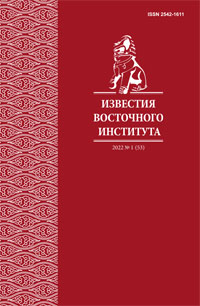Peculiarities of Anti-Chinese Immigration Legislation in the United States (mid- XIX – mid-XX centuries)
DOI:
https://doi.org/10.24866/2542-1611/2022-1/48-57Keywords:
United States, China, Chinese, immigration, migrants, legislation, restrictions, diaspora, segregation, multiculturalismAbstract
Looking at contemporary U.S. policy on multiculturalism, efforts to achieve ethnic diversity and respect for natives of other countries, it is hard to imagine that in the XIXth and XXth centuries American society was far from today's ideals. This article examines numerous U.S. immigration acts and laws from 1849 to 1949: from the California Gold Rush era to the end of World War II and the establishment of the People's Republic of China. The author studies the works of American scholars on this issue. The article vividly demonstrates changes in U.S. policy toward Chinese natives depending on internal and external circumstances, and analyzes the push and pull factors that influenced Chinese immigration. The author pays special attention to the similarities and differences in the mechanisms of sociocultural adaptation of European and Chinese immigrants to the realities of the host community, cites little-known historical facts of racial segregation in the USA. The article might be interesting to students and scholars specializing in Asian and American studies.




